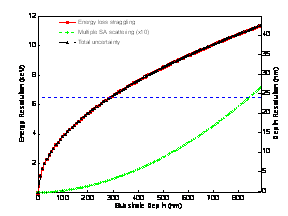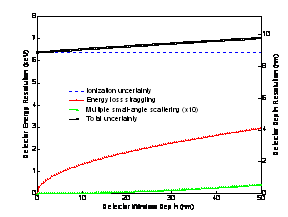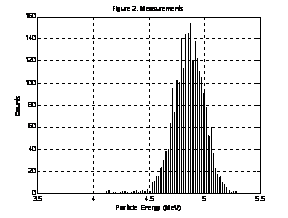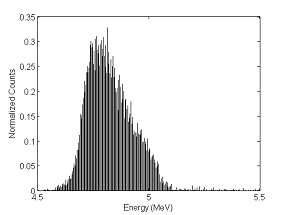
Time-Of-Flight Neutron Depth Profiling (TOF NDP) at Penn State Breazeale Nuclear Reactor
| Participants: | Kenan Ünlü, Professor of Mechanical and Nuclear Engineering |
| S. M. Çetiner, Ph.D Student of Mechanical and Nuclear Engineering | |
| Services Provided: | Neutron Beam Laboratory |
| Sponsors: | U.S. Department of Energy, under Nuclear Engineering Education Research (NEER) grant |
Introduction
Neutron depth profiling (NDP) is a near-surface analysis technique to measure the spatial distribution of certain light isotopes of technological importance in substrates with low neutron affinity. Ziegler [0, 2] first reported the use of neutron depth profiling as a nuclear reaction analysis (NRA) technique to obtain boron profiles in semiconductors. Biersack et al [ 3] later thoroughly investigated and improved the technique to almost present capabilities.
Upon neutron absorption, certain light isotopes emit a charged particle, either a proton or alpha depending on the isotope, and a recoil nucleus. The particle emission is monoenergetic and isotropic. As the charged particle and the recoil move in the substrate they lose kinetic energy through nuclear and coulombic interactions with host atoms. The amount of energy loss can then be correlated to the distance traveled by the particles, which is an indication of the depth at which the particles are created.
Conventional NDP is based on the direct measurement of particle energies by charged particle detectors, mostly by silicon semiconductor detectors. This technique is called conventional because almost all of the NDP measurements to date have been done through direct measurements of particle energies. Charged particle semiconductor detectors can be one of surface barrier detectors (SBD), passivated implanted planar silicon (PIPS) detectors or PIN photodiodes.
Conventional NDP has been used extensively for obtaining the depth profile of light elements in various fields. However, proportional to the advances in scientific and technological applications, depth profiling with higher resolutions has become a necessity. It can be shown that neutron depth profiling has reached the limits of resolution that can be attained by the conventional techniques. Time-of-flight neutron depth profiling (TOF-NDP) is proposed as an alternative approach to overcome the restraints that keep the conventional technique from achieving higher resolution.
Conventional Neutron Depth Profiling
There is multitude of mechanisms that result in limited measurement resolution, including the uncertainties due to the stochastic nature of the charged particle transport in the substrate, and if used, in the semiconductor detector, and uncertainties introduced because of limited capabilities of measurement electronics. One should also take into account the inevitable noise contamination from environmental factors such as the noise created by nearby high-frequency electronics and RF broadcasters.
In order to make the analysis more coherent, we intend to classify the uncertainty components into two major categories: (1) uncertainties created by the analyzed sample, (2) uncertainties introduced by the measurement system.
Uncertainties Introduced by the Substrate
Since the charged particle transport is a stochastic process, the substrate becomes the first source of uncertainty in revealing the true structure of the material. One source of uncertainty is a process called straggling . Straggling can be perceived as the degree of deviation from an expected trajectory of a particle as a result of randomness. Straggling can be evidenced in the form of both longitudinal and lateral deviations.
Multiple small-angle scattering is yet another mechanism that contributes to total uncertainty created by the substrate. Figure 1 (a) shows the plot of uncertainty for alpha particles in various depths for a 1- m m silicon substrate. It can be observed that straggling is the major uncertainty factor.
Uncertainties Introduced by the Measurement System
Since the measurement system has multiple components including the detector and pulse-processing electronics, it would be easier to approach each component separately.
Uncertainties introduced by the silicon semiconductor detector
The uncertainty mechanisms that are involved in silicon semiconductor detectors are similar to the mechanisms in the analyzed substrate. Since the principle of operation of a semiconductor detector is based on the ionization due to moving ions and subsequent creation of electron/hole pairs in the crystal, the number of electron/hole pairs created and hence the pulse output of the detector is determined by the energy of the ion. However, the path of charged particles in detector window , or dead layer , is not unique and suffers from the straggling effect as in the substrate. Therefore, variations in particle trajectories result in different levels of ionization and a slight change in registered energy by the detector.
The uncertainty mechanism explained above refers to the measurement uncertainty for two identical charged particles striking the detector at the same energy and angle of incidence. The uncertainty due to straggling in the detector is created by the set of all possible trajectories the particles can follow. However, there is another uncertainty involved for particles that conform to the aforementioned criterion and additionally followed the same trajectory within the semiconductor detector. Even if the particles assume the same trajectories, the ionization and the resulting electron/hole pair creation need not necessarily be identical due to charge carrier statistics . Figure 1 (b) demonstrates the uncertainties created within the detector.
(a) |
(b) |
Figure 1. (a) Uncertainties in 1-mm silicon substrate for alpha particles emitted from the 10 B (n, ? a ) 7 Li reaction; (b) components of uncertainties introduced in the detector during the particle detection
The uncertainties caused by the substrate and the detector are also given in TABLE for a particular case of alpha particles moving in silicon. The semiconductor detector amounts to about 60% of the total uncertainty. It can be concluded that, at least for the particular case of alphas with 1.5-MeV initial energy in silicon, the use of silicon semiconductor detectors for direct measurement of particle energy becomes bottleneck of resolution.
Table 1. Uncertainties for alpha particles with 1.5-MeV initial energy moving in silicon having traveled 200 nm
UNCERTAINTY FROM SUBSTRATE (keV) |
UNCERTAINTY FROM DETECTION SYSTEM (keV) |
TOTAL UNCERTAINTY Actual (Detector %) |
||
Detector |
Electronics |
|||
Energy Loss Straggling |
5.4 |
2.9 |
N/A |
8.3 (35%) |
Multiple Scattering |
<0.5 |
0.04 |
N/A |
0.59 (9%) |
Geo. Acceptance |
N/A |
0.01 |
N/A |
0.01 (N/A) |
Ionization Uncertainty |
N/A |
~5 |
N/A |
~5 (100%) |
Others |
- |
- |
(~10%) |
~10% (N/A) |
TOTAL |
~6 |
~8 |
(~10%) |
13.9 ± 10% (58%) |
Time-Of-Flight Neutron Depth Profiling
The limitation of conventional NDP due to the use of charged particle semiconductor detectors can be reduced through a proposed technique called time-of-flight neutron depth profiling (TOF-NDP). TOF-NDP eliminates the semiconductor detector and employs microchannel plates for particle detection in time-of-flight configuration. Figure 2 shows the experimental setup used in TOF-NDP measurements.
The virtue of incorporating an experimental in time-of-flight configuration is twofold: (1) time measurement can be done much precisely than the energy measurement, (2) since microchannel plate output is not proportional to particle energy, the energy can be deduced from the flight time.
Microchannel plates (MCP) are millions of electron multipliers each with 4-12- m m channel diameter operating independently. When a particle strikes the inner wall of a channel, it causes the first particle-induced electron emission. Those electrons are accelerated under the high electric field into the opposite wall subsequently creating cascade secondary electrons along the channel resulting in electron multiplication of about 10 4 in a single stage. In two stages, a multiplication of 10 6 can be obtained under normal operating conditions. The MCP's used in our experimental setup employ two-stage multiplication in chevron configuration.
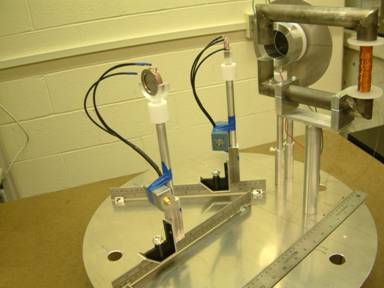
Figure 2. Penn State TOF-NDP spectroemeter
In order to create a time basis, a start and a stop trigger are needed to detect the onset of an event. Those triggers must be stimulated by two events that take place simultaneously enough for experimental purposes. Welsh [REFERENCE] et al proposed using the electron emission created by the moving ion in the substrate. As the ion leaves the surface of the test material, almost simultaneously, the electrons created are also ejected with the ion. Those electrons, however, do not carry adequate kinetic energy to reach the microchannel plate, and would most likely fall back onto the surface of the material. Therefore, an electric field is introduced to create a forced motion in the vicinity of the surface by using a finely-meshed transmission grid. Either the sample is negatively biased and the grid is held at ground potential, or vice versa. The potential difference between the sample and the grid is usually kept between 500 V to 2000 V, where microchannel plate detection efficiency for electrons tends to be higher. Another factor to keep the potential difference within that range is to refrain from creating spontaneous desorption on material surface. The potential introduces insignificant change in kinetic energies of charged particles or recoils.
Once the electrons and particles pass the acceleration zone , they enter into a magnetic field zone . The magnitude of the field is just enough to steer electrons but make no significant change in charged particle trajectory. In other words, magnetic field acts as a particle separator where electron trajectories are bent onto the start MCP –since electron velocity is larger compared to other particles' velocities- and charged particles and recoils follow their straight paths onto the stop MCP. From the two signals, it is possible to find the flight time of particles from the sample to the microchannel plates.
Uncertainties Introduced by the TOF Measurement System
Replacing the semiconductor detectors with microchannel plates reduces the uncertainty component introduced by the detector, though not completely eliminates it. The time that it takes from the creation of the first electron until all the electrons leave the channel is called transit time. Transit time also varies depending on various factors such as the location where the charged particle first hits the channel wall. One other factor that needs to be kept in mind is that secondary electron multiplication is a stochastic process and therefore, by nature, is associated with uncertainty. The uncertainty in transit time is called transit time spread (TTS) . Common transit time and transit time spread figures for a single-stage microchannel plate are 100 ps and 30-40 ps, respectively. We should specify that for TOF-NDP, two microchannel plates detectors are used, which makes four microchannel plates total.
Other factors that contribute to the overall uncertainty by the measurement system are time spread from electronics and noise. Those figures can be pulled from the manufacturer's data of the instrumentation.
When all these figure are taken into account, and the time uncertainty is converted to energy uncertainty for particles from 10 B(n, a ) 7 Li reaction moving in silicon matrix, we get an uncertainty value of about 4 keV for alpha particles, and about 800 eV for lithium recoil. Compared to the uncertainties plotted in Figure 1 (b), theoretically this corresponds to a ten-time improvement when lithium is used for the stop signal. The improvement is more substantial for heavier and less energetic recoils.
Preliminary Measurements
Preliminary measurements have been done by using a radioactive source. 210 Po, an alpha emitter, was chosen as the source in order to simulate the neutron-induced charged particle emission. 210 Po is a convenient source to mimic a neutron depth profiling experiment because it has a single emission branch, hence emits monoenergetic charged particles. 210 Po disintegrates according to the following reaction
![]()
Figure 3 (a) and (b) show the energy spectra of alpha particles from 210 Po taken by direct energy measurement (a) and by time-of-flight technique (b). The sensitivity of the measurement technique can be seen from the increase in the number of points representing the energy distribution. However, this does not need to represent actual resolution of the measurement system. The resolution improvement can be assessed based on the observation that Figure 3 (b) includes artifacts that (a) does not show. The asymmetry of the distribution, for instance, and the humps showing in the trailing edge of the peak in Figure 3 (b) are indication of features that are captured by the time-of-flight technique and not by the conventional.
(a) |
(b) |
Figure 3. (a) Alpha energy spectrum taken by direct energy measurement; (b) same spectrum taken with TOF spectrometer
The time-of-flight measurement shown in Figure 3 (b) was taken using a microchannel plates that are known to be not of high quality. In the final stage of the development, the measurements will be performed using microchannel plates that were designed for precision time signals. Those microchannel plates are expected to have lower transit time spread, which must further improve the measurement resolution.
Conclusion and Future Work
The ultimate objective of this study will be the demonstration of the depth profiling of ultrashallow junction devices using the time-of-flight neutron depth profiling technique. Ultrashallow junctions are defined as the junctions with implantation depths below 100 nm. The resolution that can be obtained by the conventional neutron depth profiling is usually no better than 20 nm for on-angle measurements. Off-angle measurements can improve the resolution to 15 nm, but that requires excessive measurement time, which is still not adequate for representing a less than 100-nm distribution. The theoretical calculations show that the depth resolution must be around 5 nm with the time-of-flight technique.
Acknowledgement
This project is sponsored by U.S. Department of Energy under Nuclear Engineering Education Research (NEER) grant.
References
1. J. F. Ziegler, G. W. Cole, J. E. E. Baglin , J. Appl. Phys., v. 43 (1972), p. 3809.
2. W. K. Chu, V. L. Moruzzi, J. F. Ziegler, J. Appl. Phys., v. 46, No. 7 (1975), pp. 2817-2820.
3. J. P. Biersack , D. Fink , R. Henkelmann , K. Müller , Nuc. Inst. Meth., v. 149 (1978), pp. 93-97
4. S. M. Cetiner , K. Ünlü , R. G. Downing , 11 th Int. Conf. on Modern Trends in Activation Analysis, Universi ty of Surrey, Gilford, UK, 2004 (Proceeding will be published in Journal of Radioanalytical and Nuclear Chemistry).
5. J. F. Welsh , The Development and Evaluation of Recoil-Nucleus Time-of-Flight Neutron Depth Profiling , Ph.D. thesis, Texas A&M University , August 1996 .


